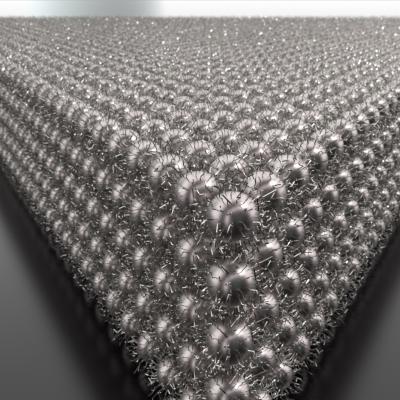As an important step toward overcoming the technical and environmental limitations of current REE processing methods, the LLNL team has patented and demonstrated a biobased, all-aqueous REE extraction and separation scheme using the REE-selective lanmodulin protein. Lanmodulin can be fixed onto porous support materials using thiol-maleimide chemistry, which can enable tandem REE purification…
Keywords
- Show all (51)
- Synthesis and Processing (21)
- Additive Manufacturing (7)
- Materials for Energy Products (6)
- Material Design (4)
- 3D Printing (2)
- Membranes (2)
- Additively Manufactured (AM) Optics (1)
- Direct Air Capture (1)
- Instrumentation (1)
- Magnet Compositions (1)
- Material Characterization (1)
- Structural Materials (1)
- (-) Rare Earth Elements (REEs) (2)
- (-) Multilayers (1)
Technology Portfolios


LLNL researchers have discovered that some inexpensive and commercially available molecules used for other applications, could render certain lanthanide and actinide elements highly fluorescent. These molecules are not sold for applications involving the detection of REEs and actinides via fluorescence. They are instead used as additives in cosmetic products and/or in the pharmaceutical…

The novel LLNL technique uses electric fields to drive and control assembly. In the literature such methods have heretofore only formed disordered ensembles. This innovative method increases local nanocrystal concentration, initiating nucleation and growth into ordered superlattices. Nanocrystals remain solvated and mobile throughout the process, allowing fast fabrication of ordered…

